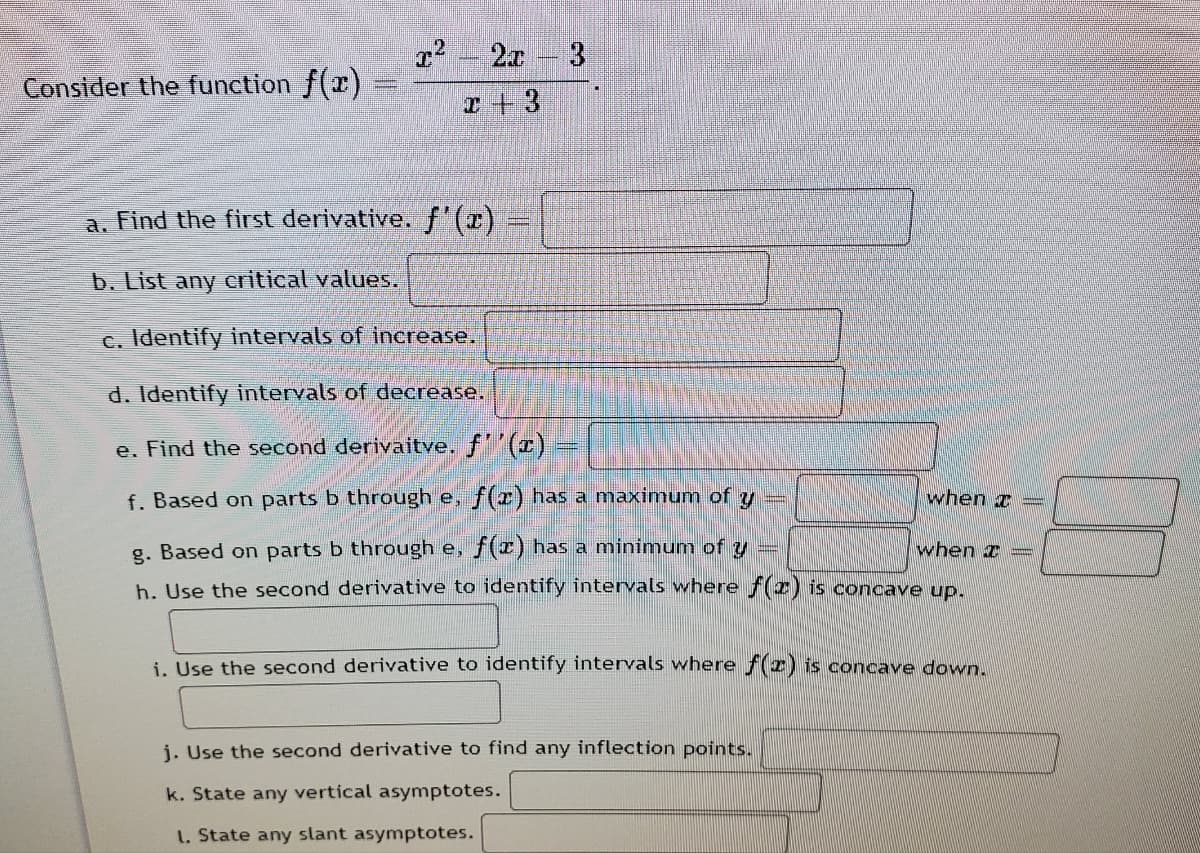3. Consider the function f(x) I + 3 a. Find the first derivative. f'(x) b. List any critical values. c. Identify intervals of increase. Idontif intenbls of dncroase
3. Consider the function f(x) I + 3 a. Find the first derivative. f'(x) b. List any critical values. c. Identify intervals of increase. Idontif intenbls of dncroase
Chapter3: Functions
Section3.2: Domain And Range
Problem 61SE: The cost in dollars of making x items is given by the function Cx)=10x+500. a. The fixed cost is...
Related questions
Question

Transcribed Image Text:2x 3
Consider the function f(x)
I + 3
a. Find the first derivative. f'(x).
b. List any eritical values.
c. Identify intervals of increase.
d. Identify intervals of decrease.
e. Find the second derivaitve. f(x) =
f. Based on parts b through e, f(r) has a maximum of y
when I =
g. Based on parts b through e, f(x) has a minimum of y =
when I =
h. Use the second derivative to identify intervals where f(z) is concave up.
i. Use the second derivative to identify intervals where f(2) is concave down.
j. Use the second derivative to find any inflection points.
k. State any vertical asymptotes.
1. State any slant asymptotes.
Expert Solution
This question has been solved!
Explore an expertly crafted, step-by-step solution for a thorough understanding of key concepts.
Step by step
Solved in 4 steps with 2 images

Recommended textbooks for you


Functions and Change: A Modeling Approach to Coll…
Algebra
ISBN:
9781337111348
Author:
Bruce Crauder, Benny Evans, Alan Noell
Publisher:
Cengage Learning

Algebra & Trigonometry with Analytic Geometry
Algebra
ISBN:
9781133382119
Author:
Swokowski
Publisher:
Cengage


Functions and Change: A Modeling Approach to Coll…
Algebra
ISBN:
9781337111348
Author:
Bruce Crauder, Benny Evans, Alan Noell
Publisher:
Cengage Learning

Algebra & Trigonometry with Analytic Geometry
Algebra
ISBN:
9781133382119
Author:
Swokowski
Publisher:
Cengage